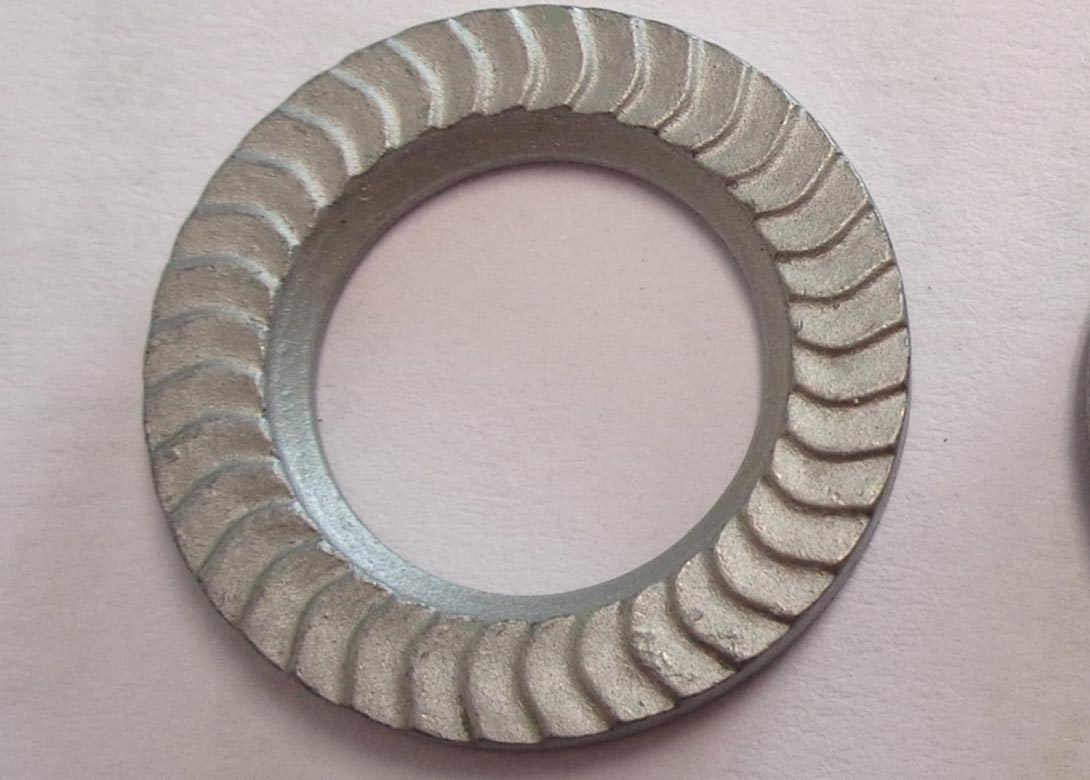
By Paolo Cattaneo, managing director at Growermetal Srl
In various applications, a fastener has to resist numerous strong stresses during its service life. In order to manufacture the best performing products, ready to withstand the most challenging everyday applications, continuous testing is an essential tool.
Growermetal has already run numerous test series on its Grower TenKeep® washers, which is its latest safety product. This very innovative flat safety washer has two surfaces with knurls of different geometry (side A and side B) and was part of a Growermetal R&D project to provide a product design that ensured maximum performance against loosening of the bolted joints, especially in presence of severe vibrations and dynamic loads.
Side A, the one on the head of the screw/nut side, slides against the surface of the underhead of the bolt when tightening the bolted joint. The advanced serration geometry of this side instead, counteracts very efficiently the loosening of the bolted joint connection. Side B, the one in contact with the bearing surface, becomes immediately solid to the bearing surface when the bolted joint is tightened, thanks to the exceptional grip of its knurling. The washer then remains permanently solid to the bearing surface.
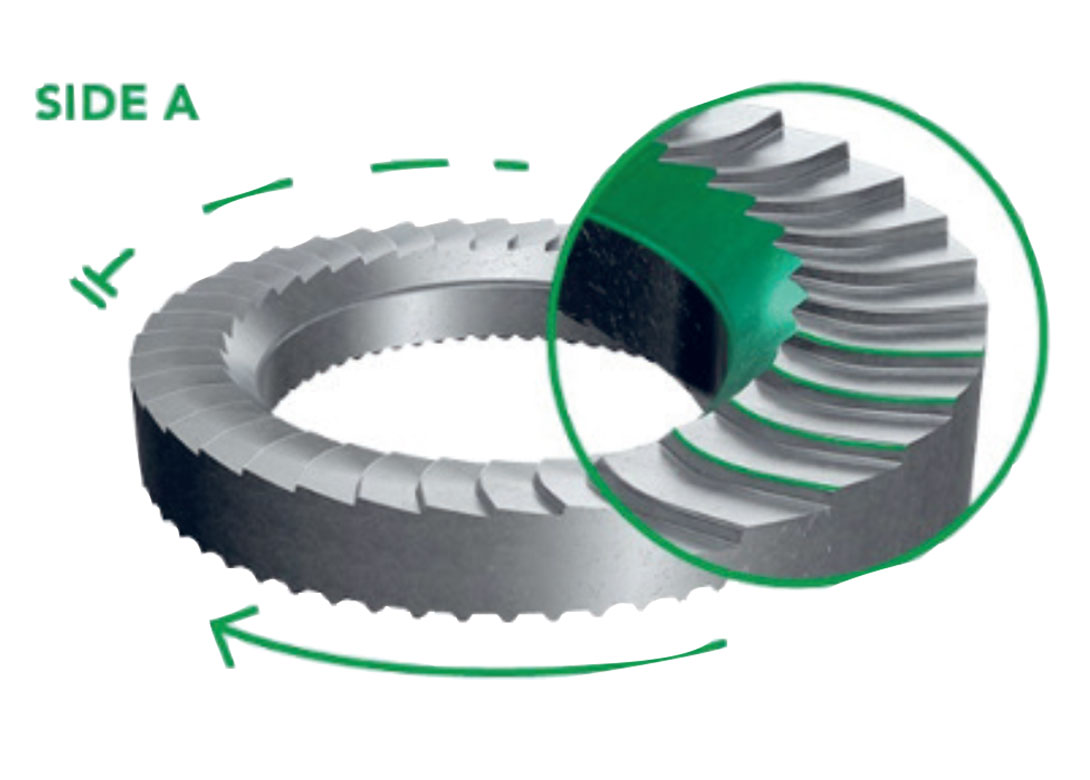
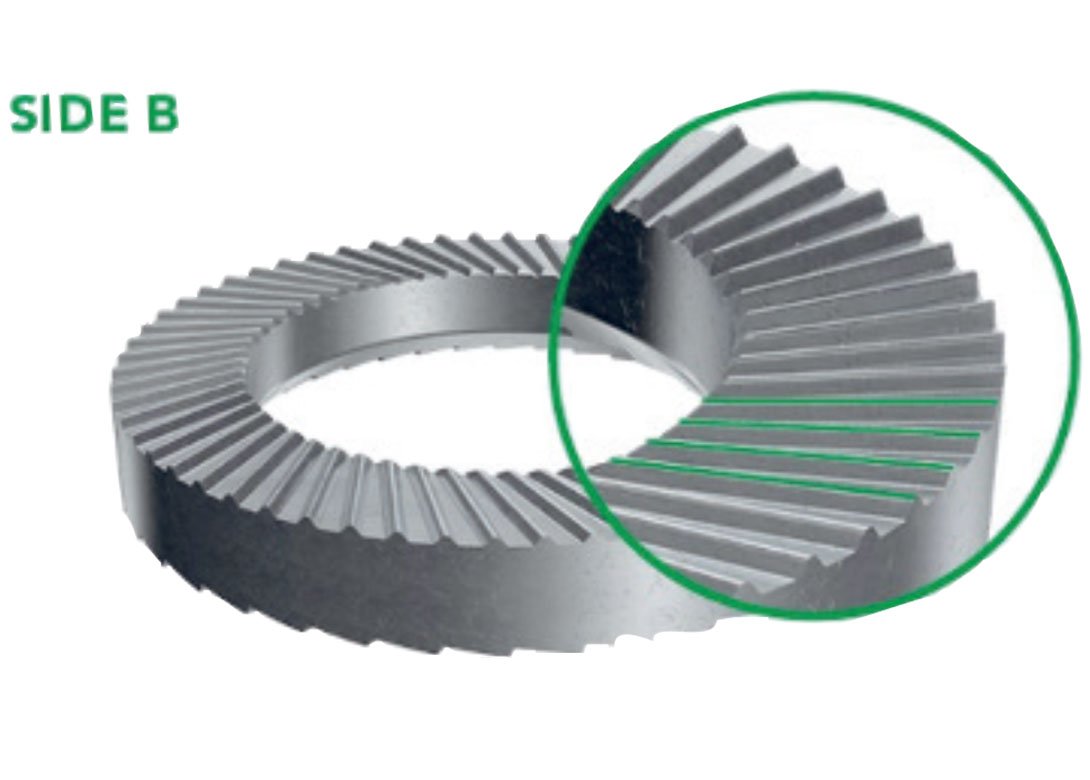
Figure 1: Side A and B geometry of Grower TenKeep® safety washers
Since vibrations represent one of the most challenging issues in bolted joint connection, Growermetal decided to test the Grower TenKeep washers with an innovative self-loosening resistance test – named the Helicopter test – performed according to NFE 25-046-2 standard, which is still in draft. The test was carried out at the CETIM, Technical Centre for Mechanical Industry, in France.
The main difference between the Helicopter test and the well known Junker vibration test, which follows the standards DIN 65151 and DIN 25201-4, is basically that the bolted joint is submitted to an alternate eccentric axial stress instead of an alternate transversal stress (Figure 2).
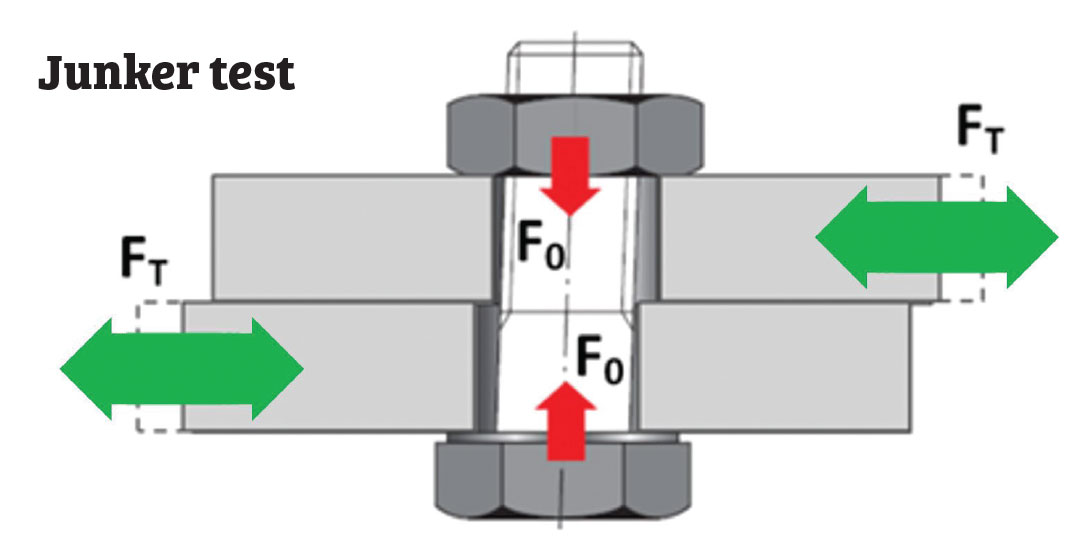
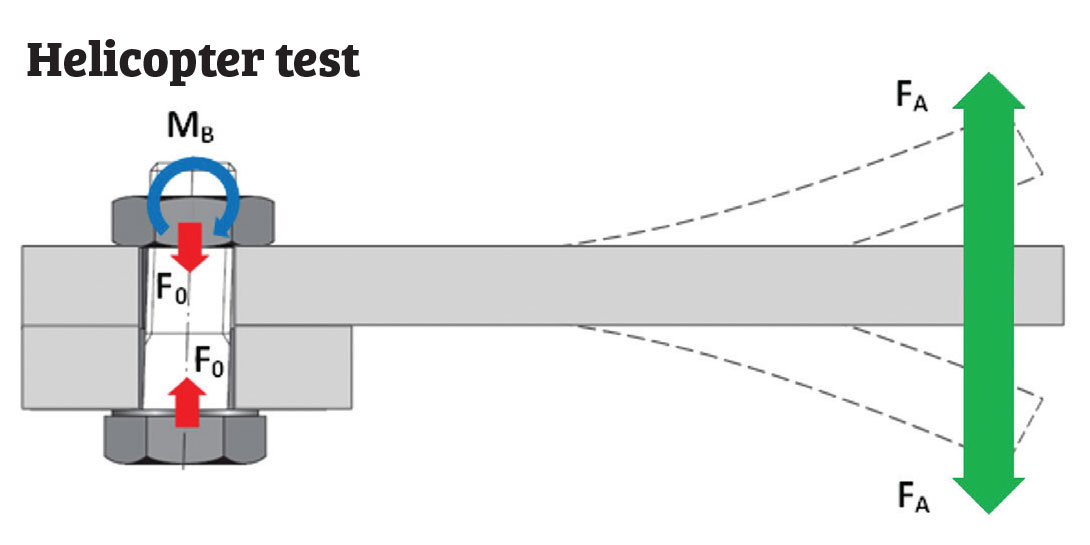
Figure 2: Bolted joint connection under alternate transversal stress (Junker) and under alternate eccentric axial stress (Helicopter)
The Helicopter test bench (Figure 3), equipped with an eccentric rotary motor combined with a crank-rod system, generates an axial alternate displacement to the bolt connection under test and vibrations are applied to the present martyr-beam.
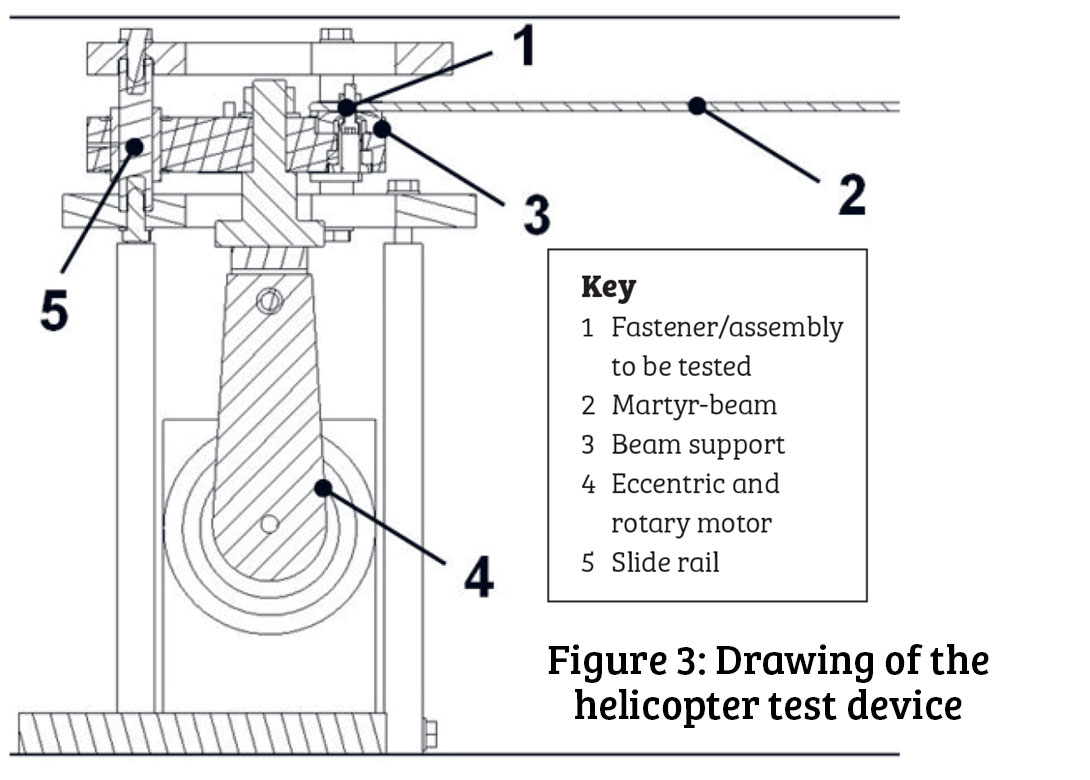
The displacement of the beam support allows a variation up to ± 4mm. Thanks to a load cell included in the beam support, the clamp force is measured throughout the test.
During the test, alternate bending loadings are applied to the washer (assembly) by resonance of the present beam. This resonance, at the first ‘natural’ frequency mode of the beam, is generated by an alternate axial displacement. The test device provides an adjustable travel frequency up to 25Hz.
Due to the beam’s oscillation, which resemble the blades of a helicopter, this loosening resistance test got the name Helicopter test.
Growermetal chose its M10 Grower TenKeep safety washers M series, with zink-flake Delta Protekt® KL120 coating, for the Helicopter loosening resistance test (Figure 4). In order to compare the performance, two other types of safety washers were also tested.

A Class 10.9 reference bolt was used without surface coating while the reference nut was coated with black zinc flake coating – providing a friction coefficient range of 0.12 – 0.18 according to ISO 16047.
The tested washers were all zink-flake Delta Protekt KL100 or KL120 coated from Dörken. Since the clamping level is obviously an important parameter, the initial clamping force (F0) was defined in such a way as to correspond to the minimum tightening possible for the assembly. In this laboratory test, using elements of a property Class 10.9, CETIM technicians fixed at 20kN the clamping force to be used, while the applied travel frequency was 19Hz.
Each washer to be tested had to run 10,000 cycles, the residual preload (Fb) had to be at least 50% of the initial preload (F0). The measuring device allowed the continuous measurement with a suitable acquisition frequency of all parameters (clamp force, number of cycles and time) as well as the electronic recording.
The goal was to define the level of resistance to loosening (Sd) of each of the four types of washers as the average of the result of five pieces of each type.
All tested washers, including Grower TenKeep washers, demonstrated a good and similar anti-loosening effect. After the test, in most of the cases it was observed there was no significant or visual rotation of the bolts.
At the beginning of the test a loss of preload was always visible, mainly linked to relaxation phenomena, such as embedding and settlement.
The helicopter loosening resistance test demonstrated once again for the Grower TenKeep a very good level of untightening torque (break-away torque) in comparison to the tightening one.
The technician at CETIM commented that they had never seen before a residual torque that high after performing the helicopter test.
By comparing Figures 5 and 6 it became clear that one of the main advantages in performance between Grower TenKeep and other safety washers – after 10,000 cycles of the helicopter test – is the break-away torque (residual torque) of the Grower TenKeep when compared to the tightening torque (initial torque). A much higher break-away torque means much higher safety against self-loosening of the bolted joint connection.
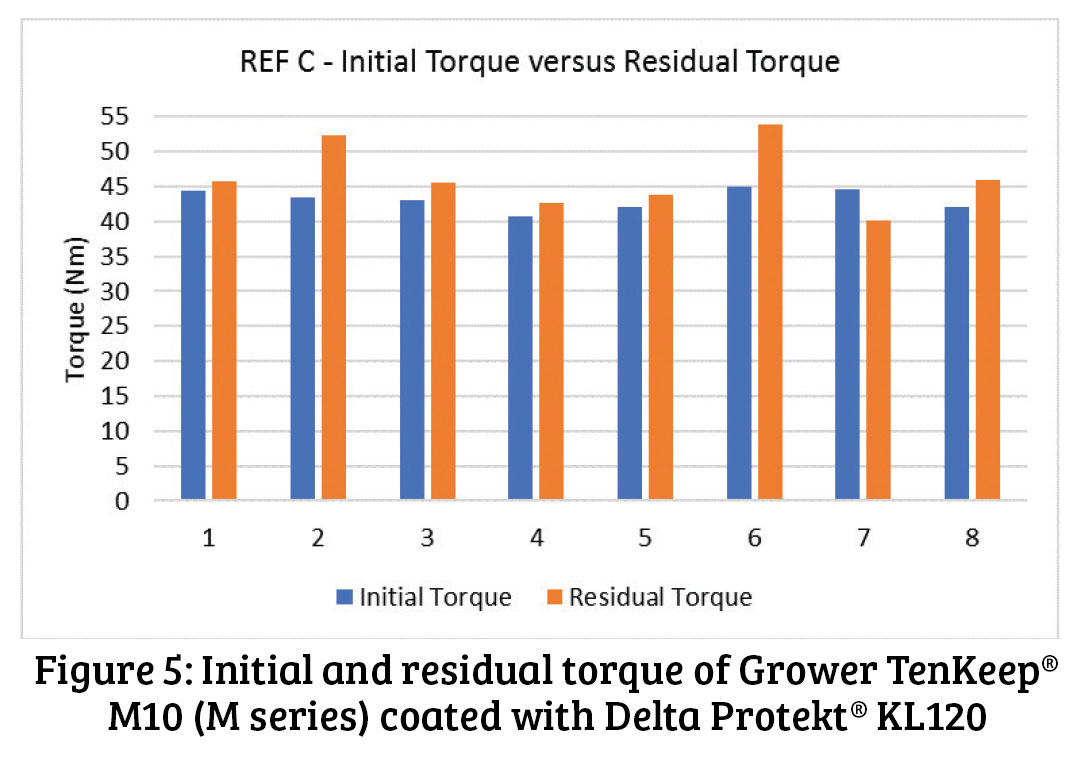
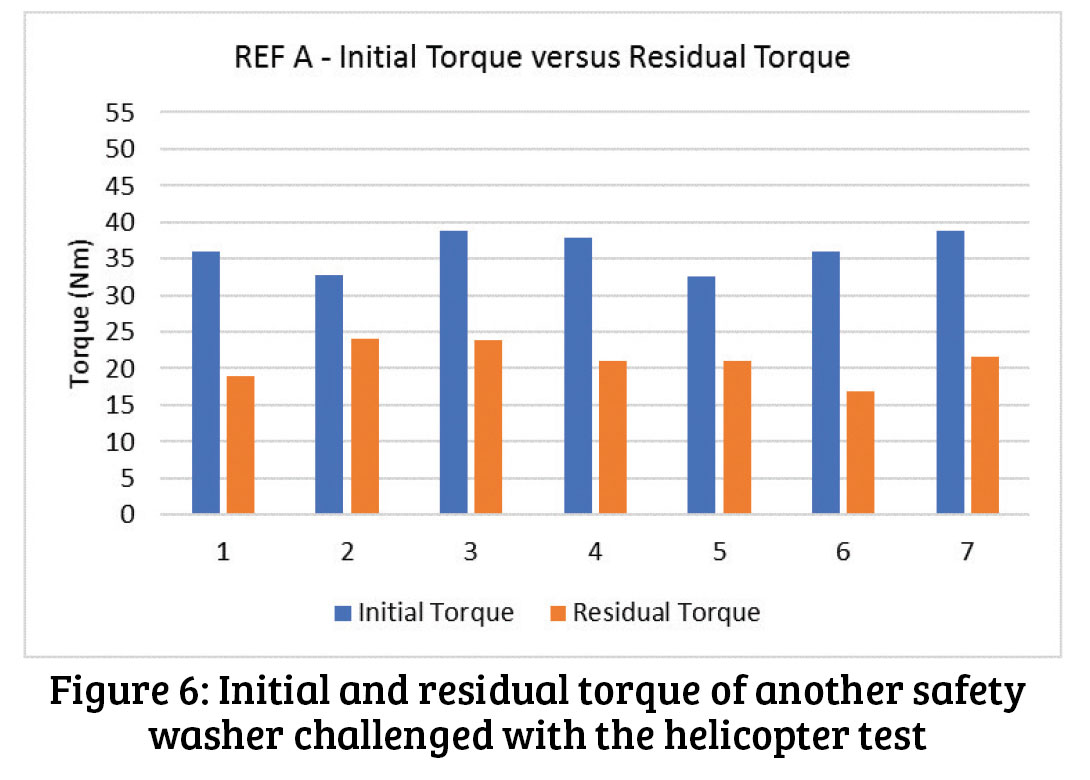
The result is even more remarkable considering the low clamping force (F0) applied during the test (20kN) for an M10 10.9 class bolt.
This outstanding result is linked to the high-quality of the Grower TenKeep washers and to the advance anti-self-loosening geometry of the serrations of its surfaces.
Further information about the helicopter test results, as well as the Grower TenKeep product, is available on Growermetal’s website.

Will joined Fastener + Fixing Magazine in 2007 and over the last 15 years has experienced every facet of the fastener sector - interviewing key figures within the industry and visiting leading companies and exhibitions around the globe.
Will manages the content strategy across all platforms and is the guardian for the high editorial standards that the Magazine is renowned.
Don't have an account? Sign Up
Signing up to Fastener + Fixing Magazine enables you to manage your account details.